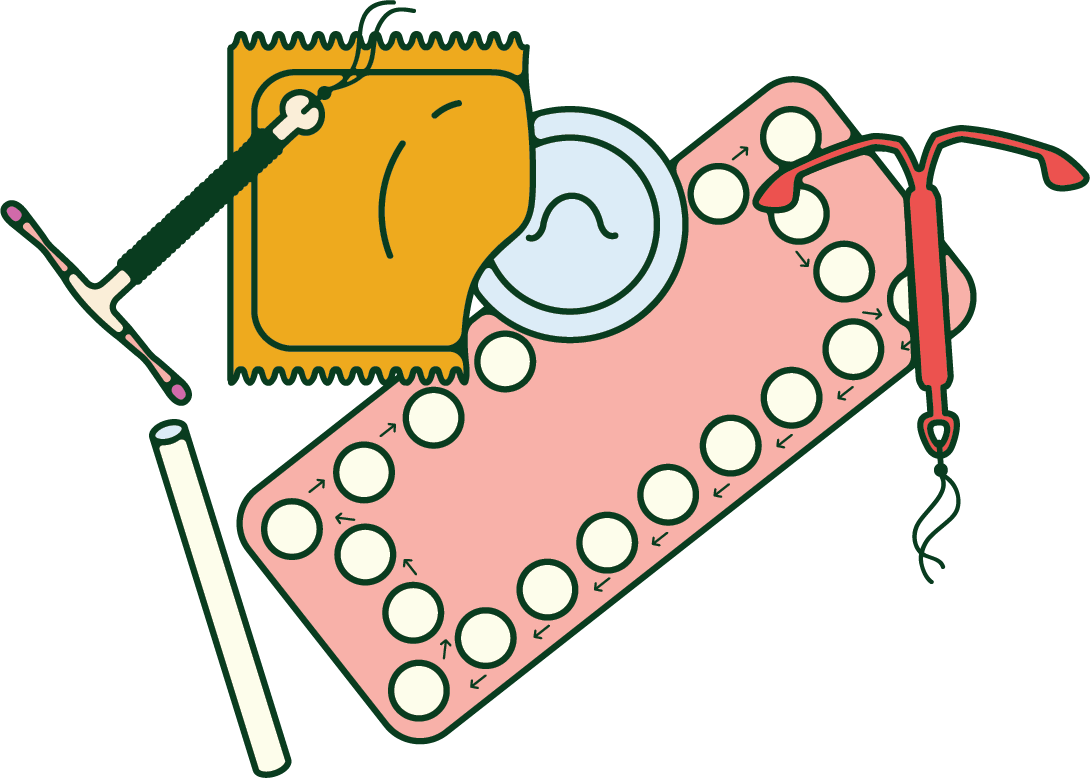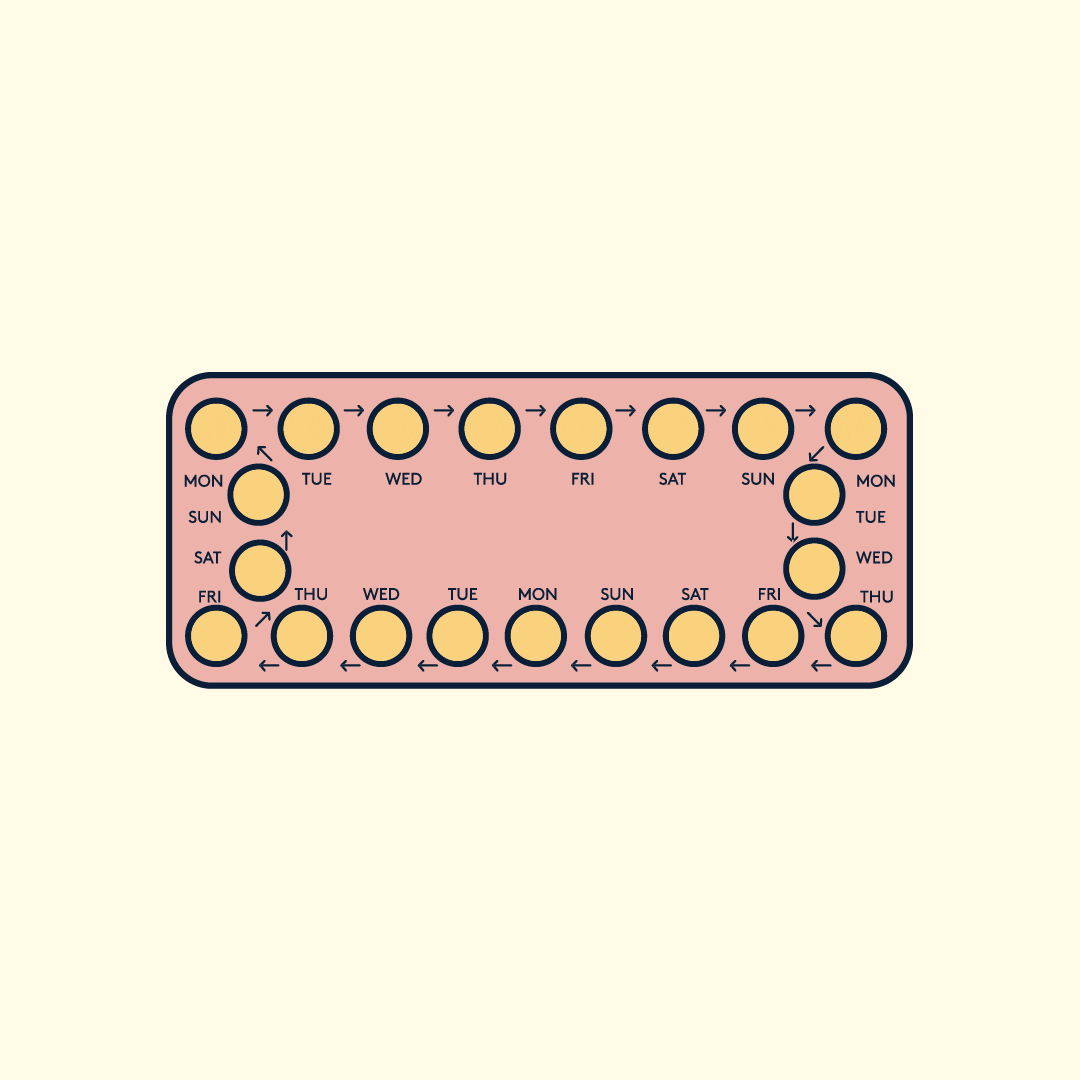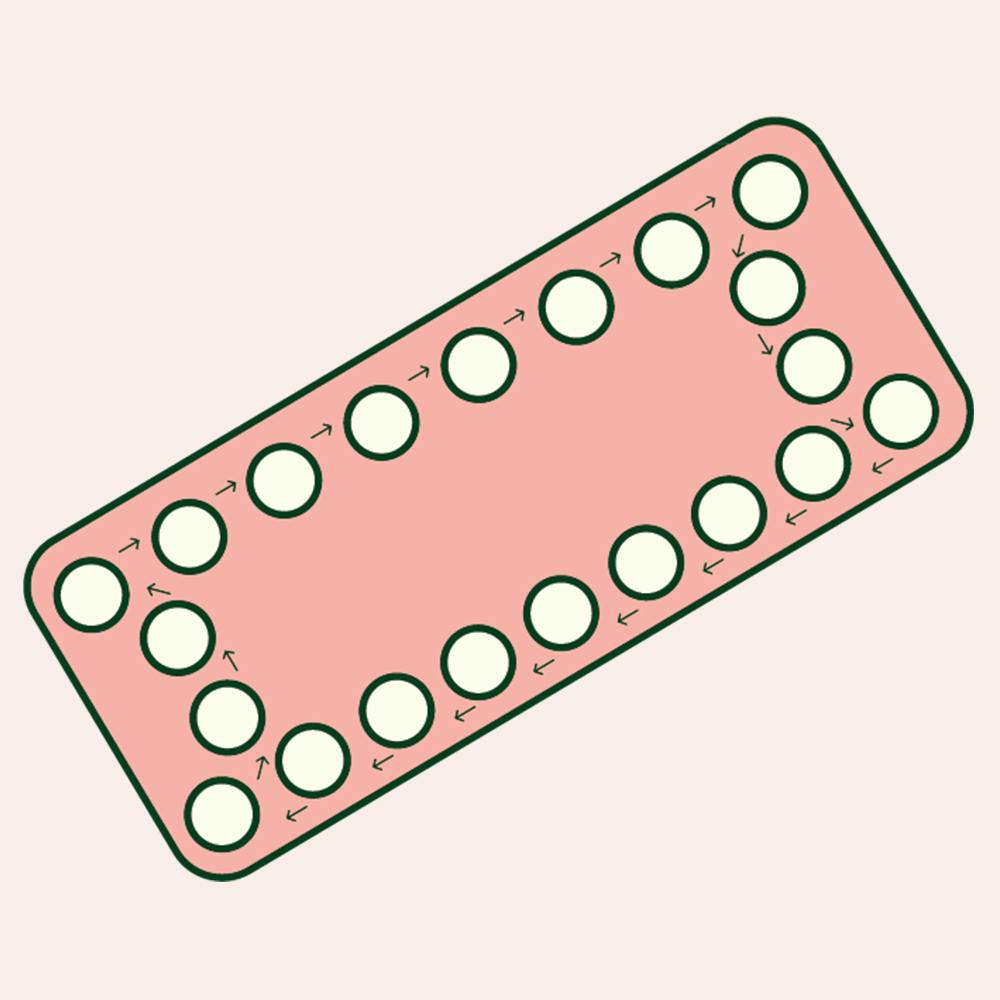Illustrated by Erin Rommel & Sabrina Bezerra
Many of us have a long complex relationship with contraception.
While often delighted by how these tiny instruments help prevent pregnancy, this incredulity is often matched with frustration with the various side effects that come attached, such as acne and impact on our mental health.
However, as with most ground-breaking innovations, there’s a complicated history behind most forms of contraception – especially the contraceptive pill and contraceptive injection. A history entangled in eugenics that goes much deeper for Black women and holds a great deal of anti-Blackness, pain and lost autonomy.
Contraception and eugenics
Margaret Sanger, a white woman activist hailing from New York, is credited with coining the term “birth control”, pioneering the movement in the US within the 1910s and 20s, and building organisations that have grown into the Planned Parenthood Federation of America.
Coming from a working-class family with 11 siblings, Sanger’s roots guided the course of her life-long crusade: affording women – working-class women especially – the right to plan out their pregnancies and control the size of their families.
She opened her first contraceptive clinic in Brooklyn in 1916, founded the American Birth Control League (ABCL) in 1921, and set up the National Committee on Federal Legislation for Birth Control, a lobbying organisation, in 1929. By 1936, a court decision overturned a provision in existing Comstock Laws, a set of federal acts that criminalised the distribution and possession of information and/or tools for “unlawful” contraception or abortion; it was now legal for doctors to prescribe contraception.

However, what we may neglect to think about – or simply aren’t aware of – is the historic focus on eugenics within contraception activism.
The eugenics movement was on the rise in the US in the early 1900s, thanks to British scientist Francis Galton who concluded in 1869 that “superior intelligence and abilities were inherited with an efficiency of 20%”; he believed that human perfection could be achieved through encouraging “well-born” members to breed more.
By the time the “science” had become established in the US by the 1920s and ‘30s, headed up by geneticist Charles Davenport, it was no longer restricted to the academic realm; eugenics had permeated social life.
Dr. Laura Rivard, who specialises in genetic practices, explored the topic for the science journal Nature: “During this period, the American Eugenics Society was founded, in addition to many local societies and groups around the country... Members competed in “fitter family” and “better baby” competitions at fairs and exhibitions...Movies and books promoting eugenic principles were popular. A film called The Black Stork (1917), based on a true story, depicted as heroic a doctor that allowed a syphilitic infant to die after convincing the child’s parents that it was better to spare society one more outcast.”
With a eugenicist movement hinged on separating the socially ‘fit’ from the ‘weak’, contraception would serve as an excellent tool for, not only controlling the population, but also controlling who exactly procreated.
In Women, Race & Class, Angela Davis outlines the ways in which eugenics had a firm hold on Sanger’s contraception movement: “In an article published by Margaret Sanger in the American Birth Control League’s journal, she defined ‘the chief issue of birth control’ as ‘more children from the fit, less from the unfit.’”
Davis also notes that articles from the director of the American Eugenics Society, Guy Irving Birch, were also being published in the ABCL’s journal.
“Birch advocated birth control as a weapon to ‘prevent the American people from being replaced by alien or Negro stock, whether it be by immigration or by overly high birth rates among others in this country.’”
Compulsory sterilisation laws were mandated across over 30 US states, to which Margaret Sanger publicly approved: “Morons, mental defectives, epileptics, illiterates, paupers, unemployables, criminals, prostitutes and dope fiends ought to be surgically sterilised.”
In 1939, Sanger set her sights on providing access to contraception to Black women and families in the South with a new initiative: The Negro Project.
Sanger described the project as “a unique experiment in the field of race-building, as well as in the field of humanitarian service for a race that has been subjected to discrimination, hardship and segregation.”
Sanger, and her colleague Florence Rose, solicited endorsement from influential Black organisations and medical groups. This was not unlike work Sanger had carried out with the setting up of her Harlem clinic, where she worked with African-American community leaders.
W.E.B. Du Bois, well-known sociologist, civil rights and activist and co-founder of the National Association for the Advancement of Coloured People (NAACP) served on the board of Sanger’s clinic in Harlem, and she also received recognition for her work from Martin Luther King Jr.

Historians continue to debate over what Sanger’s motivations were: did she actually believe in eugenics or was it just strategy? Was she really out to aid Black women or was she also a proponent of population control with Black communities?
Regardless of Sanger’s intentionality towards African-American communities, her work and her alignment with the eugenics movement created space for fundamentally anti-black population policies; policies with tentacles that have reached far beyond where her contraception movement started in New York.
“According to a National Fertility Study conducted in 1970 by Princeton University’s Office of Population Control, twenty percent of all married Black women had been permanently sterilised,” writes Davis.
“Moreover, forty-three per cent of the women sterilised through federally subsidized programmes were Black.”
A survey carried out in 1965 found that 1 in 3 of all Puerto Rican mothers (aged 20-49) were sterilised. Puerto Rican women who partook in the notorious Rio Piedras trials were not told that “this was a clinical trial, that the Pill was experimental or that there was a chance of potentially dangerous side effects.”
When the doctor overseeing the trials reported that there were “too many side effects to be generally acceptable”, these conclusions were dismissed and the first version of the contraceptive pill, Enovid, was released.

The troubling history of the contraceptive injection
Heart of the Race by Beverly Bryan, Stella Dadzie and Suzanne Scafe outlines the long tradition of neglect that Black women in the UK have experienced when it comes to their reproductive health.
They highlighted that Black women’s ability to reproduce, considering that we are seen as a “high promiscuity risk” meant that doctors have long been instrumental in exercising control over our fertility.
“The consequences of this are evident in the numerous cases of Black women who receive unwanted sterilisations or terminations, or the damaging long-term contraceptive Depo Provera, all in the interest of controlling the numbers of ‘unwanted’ Black babies.”
Considering that contraceptive injection Depo Provera was tested on Black women across the diaspora without them being warned of the potential risks or side effects (which include hair loss, extreme weight gain, severe acne and near-suicidal depression), it’s little wonder that there is a great deal of distrust between Black women and health professionals – especially when we’ve historically been called upon to rally alongside other women in the demands for accessible contraception.
“...When the women’s movement demanded ‘free, safe, and available contraception for all women’,” note the authors of Heart of the Race, “We had to remind them that for Black women, this often means being used as guinea-pigs in mass birth control programmes, or as objects of ‘research’ when new forms of birth control need to be tested.”
“A woman’s right to choose” is a rallying cry when it comes to reproductive health, but it pertains to the choices of white cishet women. As Heart of the Race highlights, for Black women, that right must extend to being able to actually have the children we want, planned or unplanned, without anti-Black policies and practices outlining otherwise.






